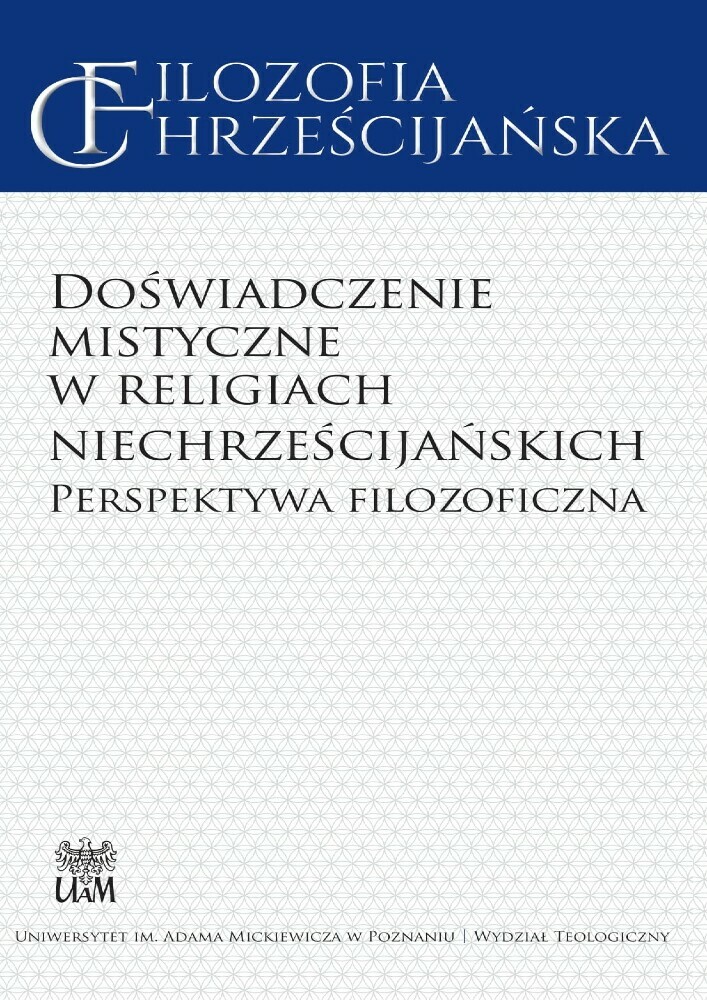Abstrakt
Sufism, Muslim mysticism, is a phenomenon inherent in Islam, existing almost from the beginning of this religion. In the article the view of Islamic sacred texts: the Qur’an and the Hadith, to the basic principles of Sufi sm: asceticism and meditation is discussed. The most important concepts of Sufi sm arising during the period of singular mystics, i.e. the formative times of Sufi sm (9th-11th century) are underlined. Concepts such as love for God, self-accountability, piety, and Union with God were presented and interpreted. Attention was also paid to the biographies of the most important mystics from this period, as recorded in the works of their successors.
Bibliografia
Źródła
Attar Farid ad-Din, Tazkirat al-aulijja, Katar br.
Al-Charraz, Rasa’il, ed. K. Samarra’i, Bagdad 1967.
Al-Ghazali, Ihja ulum ad-din, t. I-I, Kair br.
Al-Ghazali, Miszkat al-anwar, red. Abd al-Aziz as-Sirwan, Alam al-kutub, Bejrut 1985; pol. tłum. J. Wronecka, Nisza świateł, Warszawa 1990.
Al-Halladż, Kitab al-tawasin, red. L. Massignon, Paris 1913.
Ali al-Hudżwiri, Kaszf al-mahdżub, red. W. Zukowski, Tehran 1957, s. 180.
Ibn al-Arabi, Al-Isra ila makam al-asra, Lubnan 1977.
Al-Isfahani, Hilijat al-awlija wa tabakat al-asfi ja, Dar al-kutub al-ilmijja, Bejrut 1988.
Al-Kuszajri, Risala al-Kuszajrijja fi ilm at-tasawwuf, Alam al-kutub, Al-Kahira 2004.
Al-Muhasibi, Mu’atabat an-nafs, ed. M. Ata, Dar al-Ititam, Al-Kahira, 2015.
As-Sahladżi, Kitab an-nur min kalimat Abi Tajfur, red. A. Badawi, Dar al-kutub al-ilmijja, Al-Kahira 1949, s. 77.
As-Sarradż, Kitab al-luma fi -at-tasawwuf, red. R. Nicholson, Leiden 1914, arabski tekst: http:/ww.sufi.ir/books/download/farsi/sarraj-toosi/al
luma-fi-tasavof-en-ar.pdf
Al-Sulami, Tabakat as-sufi jja, red. N. Szurajba, Dar al-kutub al-ilmijja, Al-Kahira 1952.
Opracowania
Awn P., Satan’s Tragedy and Redemption. Iblīs in Sufi Psychology, Leiden 1983.
Basharin P., The Problem of Indian Infl uence on Early Sufi sm, Proceedings of Three Day International Seminar on Cultural Exchange between India, Iran, Turkey, Afghanistan and Central Asia: Contrubution of Scholars, Sufi s and Poets, New Dehli 2016, s. 41-52.
Böwering G., The Mystical Vision of Existence in Classical Islam, Berlin 1980.
Chittick W.C., The Perfect Man as the Prototype of the Self in the Sufi sm of Jāmī, „Studia Islamica”, 49, 1979, s. 135-157.
Colby F., Narrating Muhammad’s Night Journey: Tracing the Development of the Ibn ‘Abbas Ascension Discourse, New York 2008.
Cornell R.E., Rabi‘a from Narrative to Myth, London 2019.
Ebstein M., Ḏū l-Nūn Miṣrī and Early Islamic Mysticism, „Arabica”, 61, 2014, s. 559-612.
El-Jaichi S., Early Philosophical Sufi sm: The Neoplatonic Thought of Ḥusayn ibn Manṣūr al-Ḥallāğ, New York 2018.
Encyclopaedia of the Qur’ān, red. J. Dammen McAuliff e, t. I-VI, Leiden 2001.
Fahm A.O., A Brief Analysis on the Meditation on Death in Sufi sm. With Reference to Al-Ghazālī and al-Rūmī, „The International Journal of Religion and Spirituality in Society”, 4, 3, 2014, s. 6-14.
Hoyland R., Arabia and the Arabs: From the Bronze Age to the Coming of Islam, London 2001.
Karamustafa A., Sufi sm: The Formative Period, Edinburgh 2007.
Khamenei S.M., „Man’s Creativity/Vicegerency” in Islamic Philosophy and Mysticism, w: Islamic Philosophy and Occidental Phenomenology on the Perennial Issue of Microcosm and Macrocosm, red. A.T. Tymieniecka, Zurich 2019, s. 149-159.
Lubmard J.E.B., From ḥubb to ‘ishq: the Development of Love in Early Sufi sm, „Journal of Islamic Studies”, 18, 3, 2007, s. 345-385.
Massignon L., La Passion de Husayn Ibn Mansû r Hallâ j : martyr mystique de l’Islam, exé cuté à Bagdad le 26 mars 922: é tude d’histoire religieuse, Paris 1975
Morris J.W., The Spiritual Ascension: Ibn ‘Arabî and the Mi’râj, „Journal of the American Oriental Society”, 107, 1987, s. 629-652, 108, 1988, s. 63-77.
Pachniak K., Pojęcie światła w islamie. Mistyka światła w traktacie Nisza świateł Al-Ghazalego, „Ethos”, 2017, nr 3(119), s. 136-153.
Picken G., Spiritual Purifi cation in Islam. The Life and Works of al-Muḥāsibī, London–New York 2011.
Renard J., Knowledge of God in Classical Sufi sm: Foundations of Islamic Mystical Theology, New York 2004.
Saab N., Mystical Language and Theory of Sufi Writings in the Sufi Writings of Kharrāz, Yale 2004.
Sarrabi-Zadeh S., Practical Mysticism in Islam and Christianity. A Comparative Study of Jalal ad-Din Rumi and Meister Eckhart, London–New York 2016, s. 182-187.
Schimmel A., As Through a Veil: Mystical Poetry in Islam, New York 1982.
Schimmel A., Mystical Dimensions of Islam, Chapel Hill 1975.
Shah-Kazemi R., The Notion and Signifi cance of Ma‘rifa in Sufi sm, „Islamic Studies”, 13/2, 2002, s. 155-181.
Sviri S., The Self and its Transformation in Sufi sm, w: Self and Self-Transormation in the History of Religions, red. D. Shulman, G.G. Stroumsa, Oxford 2002, s. 195-2015.
Wagtendonk K., Fasting in the Koran, Leiden 1968.
Licencja
Autorzy
Autorzy tekstów przyjętych do publikacji w czasopiśmie Filozofia Chrześcijańska są zobowiązani do wypełnienia, podpisania i odesłania na adres redakcji umowy o udzielenie nieodpłatnej licencji do utworów, z zobowiązaniem do udzielania sublicencji CC.
Zgodnie z umową, autorzy tekstów opublikowanych w czasopiśmie Filozofia Chrześcijańska udzielają Uniwersytetowi im. Adama Mickiewicza w Poznaniu niewyłącznej i nieodpłatnej licencji oraz zezwalą na użycie sublicencji Creative Commons Attribution-NoDerivatives 4.0 International (CC BY-ND 4.0).
Autorzy zachowują prawa do dalszego, swobodnego rozporządzania utworem.
Użytkownicy
Zainteresowani użytkownicy internetu uprawnieni są do korzystania z utworów opublikowanych od 2015 roku w Filozofia Chrześcijańska pod następującymi warunkami:
- uznanie autorstwa - obowiązek podania wraz z rozpowszechnionym utworem, informacji, o autorstwie, tytule, źródle (odnośniki do oryginalnego utworu, DOI) oraz samej licencji;
- bez tworzenia utworów zależnych - utwór musi być zachowany w oryginalnej postaci, nie można bez zgody twórcy rozpowszechniać np. tłumaczeń, opracowań.
Do wszystkich tekstów opublikowanych przed 2015 r. prawa autorskie są zastrzeżone.
Inne
Uniwersytet im. Adama Mickiewicza w Poznaniu zachowuje prawo do czasopisma jako całości (układ, forma graficzna, tytuł, projekt okładki, logo itp.).
